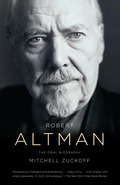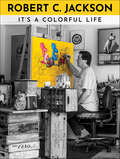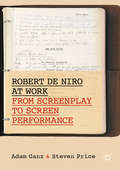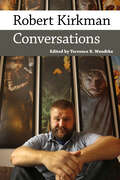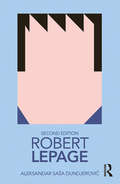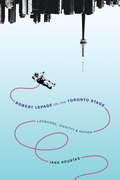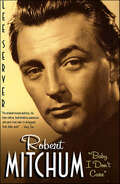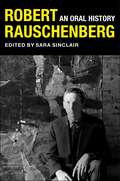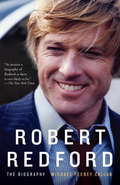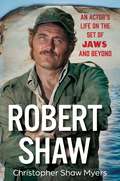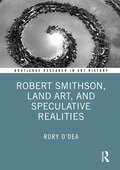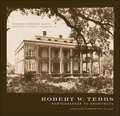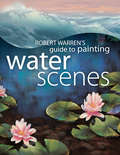- Table View
- List View
Robbinsdale
by Peter James RichieRobbinsdale was named for entrepreneur, politician, and real estate developer Andrew B. Robbins. While serving in the Minnesota State Senate, Robbins often passed through the area just north of Minneapolis by train. Impressed by the landscape, he purchased 90 acres of rolling hills and lakes. In 1887, he platted a tract called Robbinsdale Park. Five years later, the development was incorporated as a village bearing his name. Robbins worked tirelessly to attract residents, business, and industry. When the transit company refused to extend a streetcar line to the area, he built his own. City dwellers came out in droves to enjoy hunting, fishing, boating, and the bathing beaches on Robbinsdale's lakes. In the 1920s, the village gained notoriety with every new issue of Captain Billy's Whiz Bang. Created by local veteran Wilford Hamilton Fawcett, the little humor magazine launched a publishing empire. Along with the rest of the country, Robbinsdale grew up in the 20th century, but the first suburb of Minneapolis still feels like the small town Andrew B. Robbins dreamed up more than a century ago.
Robert Altman: The Oral Biography
by Mitchell ZuckoffThe late Robert Altman--visionary director, hard-partying hedonist, eccentric family man, Hollywood legend--comes roaring to life in this rollicking cinematic biography, told in a chorus of voices that can only be called Altmanesque.
Robert C. Jackson: It's a Colorful Life
by Robert C. JacksonFeaturing more than 525 paintings in Robert C. Jackson's iconic style of realism with a slyly irreverent twist, this beautiful book thoughtfully covers his midcareer works. Many of his signature themes are recognizable but now treated more deeply, the compelling nature of his art is intensified, and larger canvases prevail. Known especially for his realistic still-life paintings featuring objects such as soda crates, balloon dogs, and foods, Jackson creates playful, exuberant art that often makes impossible situations believable, one reason for its wide appeal. Learn more about: • His final college semester when he took Painting 101 to fill out his schedule. • The first time he ever quit anything. (It was a career as an engineer.) • How the concept of "seriously funny" motivates him. • The cleansing and growth that occurs with aging as a painter. Jackson's paintings have been featured in five solo museum exhibitions to date, and are in private, corporate, and museum collections worldwide, ranging from the Delaware Art Museum to the South Dakota Art Museum. Understand why new fans and established collectors alike respond to this artist who has found his unique and identifiable voice within contemporary art.
Robert De Niro at Work: From Screenplay to Screen Performance (Palgrave Studies in Screenwriting)
by Steven Price Adam GanzRobert De Niro and the Working Screenplay is the first critical study to examine how Robert de Niro, perhaps the finest screen actor of his generation, works with screenplays to imagine, prepare and denote his performance. In categorising the various ways in which De Niro works with a screenplay, this book will re-examine the relationship between actor and text. This book considers the screenplay as above all a working document and a material object, present at every stage of the filmmaking process. The working screenplay goes through various iterations in development and exists in many versions on set, each adapted and personalised for the specific use of the individual and their role. As the archive reveals, nobody works more closely with the script than the actor, and no actor works more on a script than De Niro.
Robert Duncan in San Francisco
by Michael RumakerA newly expanded edition of an enduring classic, Robert Duncan in San Francisco is both a portrait of the premier poet of the San Francisco Renaissance and a fascinating account of gay life in late 1950s America. Following his graduation from Black Mountain College, Michael Rumaker made his way to the post-Howl, pre-Stonewall gay literary milieu of San Francisco, where he entered the circle of Robert Duncan. His account of that time gives an unvarnished look at Duncan's magnetic personality and occasional failings, while delivering vivid snapshots of other significant poets like Jack Spicer, John Wieners, and Joanne Kyger against the backdrop of legendary North Beach haunts like The Place, Vesuvio, and City Lights Books. Contrasting Duncan's daringly frank homosexuality with his own then-closeted life, Rumaker conjures up with harrowing detail an era of police persecution of a largely clandestine gay community struggling to survive in the otherwise "open city" of San Francisco. First published in 1996, this expanded edition includes a selection of previously unpublished letters between Rumaker and Duncan, and an interview conducted for this edition, in which Rumaker provides further reflections on the poet and the period.Michael Rumaker has written several novels and short story collections, as well as the memoir Black Mountain Days. He was born in Philadelphia, Pennsylvania, and is a graduate of Black Mountain College-where Duncan served as his outside thesis advisor-and Columbia University. He taught at City University of New York and the New School for Social Research.
Robert Heinecken and the Art of Appropriation
by Matthew BiroThe first comprehensive study of the artist Robert Heinecken and his critical views on the culture of mass media This is the first book-length study dedicated to the artist Robert Heinecken, whose innovative photographic practices sought to interrogate how mass media imagery facilitated the construction of individual and collective identities. Appropriating, rephotographing, and layering pictures culled from newspapers, advertisements, pornography, and television, Heinecken recombined and transformed the ubiquitous images of mass culture to encourage viewers to critically reflect on their sense of self. From the 1960s through the late 1990s, Heinecken&’s controversial art continually challenged inherited ideas around consumerism, the facticity of reportage, and visual culture&’s relationship to gender and identity politics. Embodying the evolution of contemporary art toward increasingly hybrid and conceptual approaches, his oeuvre includes examples of painting, sculpture, photomontage, performance, installation, time-based media, and artist&’s books, all of which collectively exploit photography&’s reproducibility to subvert society&’s dominant ideologies and stereotypical modes of representation.Author Matthew Biro presents an exhaustive look at Heinecken&’s life and art, locating him within a lineage that encompasses the activities of the early twentieth-century avant-gardes and the postmodern strategies of the Pictures Generation artists. Assessing his career within the specific political and historical contexts from which he gleaned his material, and illustrated throughout with vibrant full-color reproductions of his art, this in-depth examination demonstrates Robert Heinecken&’s significance as a key figure of twentieth-century art and an incisive commentator on modern life in America.
Robert Kirkman: Conversations (Conversations with Comic Artists Series)
by Terrence R. WandtkeRobert Kirkman (b. 1978) is probably best known as the creator of The Walking Dead. The comic book and its television adaptation have reinvented the zombie horror story, transforming it from cult curiosity and parody to mainstream popularity and critical acclaim. In some ways, this would be enough to justify this career-spanning collection of interviews. Yet Kirkman represents much more than this single comic book title.Kirkman’s story is a fanboy’s dream that begins with him financing his irreverent, independent comic book Battle Pope with credit cards. After writing major titles with Marvel comics (Spider-Man, Captain America, and X-Men), Kirkman rejected companies like DC and Marvel and publicly advocated for creator ownership as the future of the comics industry. As a partner at Image, Kirkman wrote not only The Walking Dead but also Invincible, a radical reinvention of the superhero genre. Robert Kirkman: Conversations gives insight to his journey and explores technique, creativity, collaboration, and the business of comics as a multimedia phenomenon. For instance, while continuing to write genre-based comics in titles like Outcast and Oblivion Song, Kirkman explains his writerly bias for complex characters over traditional plot development. As a fan-turned-creator, Kirkman reveals a creator’s complex relationship with fans in a comic-con era that breaks down the consumer/producer dichotomy. And after rejecting company-ownership practices, Kirkman articulates a vision of the creator-ownership model and his goal of organic creativity at Skybound, his multimedia company. While Stan Lee was the most prominent comic book everyman of the previous era of comics production, Kirkman is the most prominent comic book everyman of this dynamic, evolving new era.
Robert Lepage (Routledge Performance Practitioners)
by Aleksandar Saša DundjerovićRobert Lepage is one of Canada’s foremost theatre authors and directors. His company, Ex Machina, has toured to international acclaim and he has lent his talents to areas as diverse as opera, film, solo performance and installation art. His most celebrated work blends acute personal narratives with bold global themes through collaborative and multimedia theatricality. This book is the first to combine: • An overview of the key phases in Lepage’s life and career • An examination of the issues and questions pertinent to his work • A discussion of The Dragons’ Trilogy as a paradigm of his working methods • A variety of practical exercises designed to give an insight into Lepage’s creative process. As a first step towards critical understanding, and as an initial exploration before going on to further, primary research, Routledge Performance Practitioners are of unbeatable value for today’s student.
Robert Lepage on the Toronto Stage: Language, Identity, Nation
by Jane KoustasA leader in theatre production for a global community, Robert Lepage - actor, cineaste, and director - revolutionized the Toronto theatre scene from the 1980s onwards by challenging conventional notions of language, identity, and national belonging. Exploring Lepage's twenty-five-year history on the Toronto stage, Jane Koustas analyzes his importance in the Canadian and international theatre scenes. Outlining the reasons behind Lepage's success in Toronto, Koustas skilfully engages with a wide range of journalistic and scholarly texts, moving between French and English critical reception of his work. For Lepage, Toronto offered the best of both worlds: he could remain an ardent Quebecer while being welcomed as a fellow Canadian. Lepage, raised in a bilingual family, brought to his Toronto productions an understanding of English and Canadian culture that resisted presenting French against English and the rest of Canada versus Quebec. Instead, he took Toronto audiences on a global theatre voyage that transformed traditional geopolitical, cultural, and linguistic boundaries and questioned identity. Investigating the relationship between Quebec's master dramaturge and Toronto, a burgeoning cosmopolitan city determined to be a global cultural capital, Robert Lepage on the Toronto Stage analyzes the success of one of the few Québécois artists to have achieved fame in English Canada.
Robert Lepage on the Toronto Stage: Language, Identity, Nation
by Jane KoustasA leader in theatre production for a global community, Robert Lepage - actor, cineaste, and director - revolutionized the Toronto theatre scene from the 1980s onwards by challenging conventional notions of language, identity, and national belonging. Exploring Lepage’s twenty-five-year history on the Toronto stage, Jane Koustas analyzes his importance in the Canadian and international theatre scenes. Outlining the reasons behind Lepage’s success in Toronto, Koustas skilfully engages with a wide range of journalistic and scholarly texts, moving between French and English critical reception of his work. For Lepage, Toronto offered the best of both worlds: he could remain an ardent Quebecer while being welcomed as a fellow Canadian. Lepage, raised in a bilingual family, brought to his Toronto productions an understanding of English and Canadian culture that resisted presenting French against English and the rest of Canada versus Quebec. Instead, he took Toronto audiences on a global theatre voyage that transformed traditional geopolitical, cultural, and linguistic boundaries and questioned identity. Investigating the relationship between Quebec’s master dramaturge and Toronto, a burgeoning cosmopolitan city determined to be a global cultural capital, Robert Lepage on the Toronto Stage analyzes the success of one of the few Québécois artists to have achieved fame in English Canada.
Robert Lepage’s Scenographic Dramaturgy: The Aesthetic Signature at Work (Adaptation in Theatre and Performance)
by Melissa PollThis book theorizes auteur Robert Lepage’s scenography-based approach to adapting canonical texts. Lepage’s technique is defined here as ‘scenographic dramaturgy’, a process and product that de-privileges dramatic text and relies instead on evocative, visual performance and intercultural collaboration to re-envision extant plays and operas. Following a detailed analysis of Lepage’s adaptive process and its place in the continuum of scenic writing and auteur theatre, this book features four case studies charting the role of Lepage’s scenographic dramaturgy in re-‘writing’ extant texts, including Shakespeare’s Tempest on Huron-Wendat territory, Stravinsky’s Nightingale in a twenty-seven ton pool, and Wagner’s Ring cycle via the infamous, sixteen-million-dollar Metropolitan Opera production. The final case study offers the first interrogation of Lepage’s twenty-first century ‘auto-adaptations’ of his own seminal texts, The Dragons’ Trilogy and Needles & Opium. Though aimed at academic readers, this book will also appeal to practitioners given its focus on performance-making, adaptation and intercultural collaboration.
Robert Louis Stevenson’s Pacific Impressions: Photography and Travel Writing, 1888–1894 (Palgrave Studies in Nineteenth-Century Writing and Culture)
by Carla ManfrediThis book tackles photography’s role during Robert Louis Stevenson’s travels throughout the Pacific Island region and is the first study of his family’s previously unpublished photographs. Cutting across disciplinary boundaries, the book integrates photographs with letters, non-fiction, and poetry, and includes much unpublished material. The original readings of photographs and non-fiction highlight Stevenson’s engagement with colonial ideology and reality and advance new arguments about Victorian travel, settlement, and colonialisms in the Pacific. Like the Stevensons, the book moves from the Marquesas to the atolls of the Gilbert Islands in Micronesia; from the Kingdom of Hawai‘i’s political ambitions to Samoan plantations and the Stevensons’ settlement at Vailima. Central to this study is the notion that Pacific history and Pacific Island cultures matter to the interpretation of Stevenson's work, and a rigorous historical and cultural contextualization ensures that local details structure literary and photographic interpretation. The book’s historical grounding is key to its insightful conclusions regarding travel, settlement, photography, and colonialism.
Robert Maillart's Bridges: The Art of Engineering
by David P. BillingtonThe description for this book, Robert Maillart's Bridges: The Art of Engineering, will be forthcoming.
Robert Mitchum: "Baby I Don't Care"
by Lee ServerOne of the movies' greatest actors and most colorful characters, a real-life tough guy with the prison record to prove it, Robert Mitchum was a movie icon for an almost unprecedented half-century, the cool, sleepy-eyed star of such classics as The Night of the Hunter; Heaven Knows, Mr. Allison; Cape Fear; The Longest Day; Farewell, My Lovely; and The Winds of War. Mitchum's powerful presence and simmering violence combined with hard-boiled humor and existential detachment to create a new style in movie acting: the screen's first hipster antihero-before Brando, James Dean, Elvis, or Eastwood-the inventor of big-screen cool.Robert Mitchum: "Baby, I Don't Care" is the first complete biography of Mitchum, and a book as big, colorful, and controversial as the star himself. Exhaustively researched, it makes use of thousands of rare documents from around the world and nearly two hundred in-depth interviews with Mitchum's family, friends, and associates (many going on record for the first time ever) ranging over his seventy-nine years of hard living. Written with great style, and vividly detailed, this is an intimate, comprehensive portrait of an amazing life, comic, tragic, daring, and outrageous.
Robert Motherwell, Abstraction, and Philosophy (Routledge Focus on Art History and Visual Studies)
by Robert HobbsEmploying an interdisciplinary approach, this book breaks new ground by considering how Robert Motherwell’s abstract expressionist art is indebted to Alfred North Whitehead’s highly original process metaphysics. Motherwell first encountered Whitehead and his work as a philosophy graduate student at Harvard University, and he continued to espouse Whitehead’s processist theories as germane to his art throughout his life. This book examines how Whitehead’s process philosophy—inspired by quantum theory and focusing on the ongoing ingenuity of dynamic forces of energy rather than traditional views of inert substances—set the stage for Motherwell’s future art. This book will be of interest to scholars in twentieth-century modern art, philosophy of art and aesthetics, and art history.
Robert Plant: A Life
by Paul ReesThis biography of the solo artist and legendary lead singer of Led Zeppelin “informs and entertains . . . leav[ing] few stones in Plant’s life unturned.” —Mojo magazineRobert Plant by Paul Rees is the definitive biography of Led Zeppelin's legendary frontman. As lead singer for one of the biggest and most influential rock bands of all time—whose song “Stairway to Heaven” has been played more times on American radio than any other track—Robert Plant defined what it means to be a rock god.Over the course of his twenty-year career, British music journalist and editor Paul Rees has interviewed such greats as Sir Paul McCartney, Bruce Springsteen, Madonna, Bono, and AC/DC. Rees now offers a full portrait of Robert Plant for the first time, exploring the forces that shaped him, the ravaging highs and lows of the Zeppelin years—including his relationship with Jimmy Page and John Bonham—and his life as a solo artist today.Illustrated with more than two dozen photographs, Robert Plant: A LIfe is the never-before-told story of a gifted, complicated music icon who changed the face of rock 'n' roll.“Anyone seeking insight into Robert Plant as a man and musician will find it here.” —Q Magazine“Particularly enlightening on Plant’s formative pre-Zep years in the Midlands, A Life puts the singer’s eclectic career into clear context.” —Dave Lewis, Tight But Loose magazine
Robert Rauschenberg: An Oral History (The Columbia Oral History Series)
by Sara SinclairRobert Rauschenberg (1925–2008) was a breaker of boundaries and a consummate collaborator. He used silk-screen prints to reflect on American promise and failure, melded sculpture and painting in works called combines, and collaborated with engineers and scientists to challenge our thinking about art. Through collaborations with John Cage, Merce Cunningham, and others, Rauschenberg bridged the music, dance, and visual-art worlds, inventing a new art for the last half of the twentieth century.Robert Rauschenberg is a work of collaborative oral biography that tells the story of one of the twentieth century’s great artists through a series of interviews with key figures in his life—family, friends, former lovers, professional associates, studio assistants, and collaborators. The oral historian Sara Sinclair artfully puts the narrators’ reminiscences in conversation, with a focus on the relationship between Rauschenberg’s intense social life and his art. The book opens with a prologue by Rauschenberg’s sister and then shifts to New York City’s 1950s and ’60s art scene, populated by the luminaries of abstract expressionism. It follows Rauschenberg’s eventual move to Florida’s Captiva Island and his trips across the globe, illuminating his inner life and its effect on his and others’ art.The narrators share their views on Rauschenberg’s work, explore the curatorial thinking behind exhibitions of his art, and reflect on the impact of the influx of money into the contemporary art market. Included are artists famous in their own right, such as Laurie Anderson and Brice Marden, as well as art-world insiders and lesser-known figures who were part of Rauschenberg’s inner circle. Beyond considering Rauschenberg as an artist, this book reveals him as a man embedded in a series of art worlds over the course of a long and rich life, demonstrating the complex interaction of business and personal, public and private in the creation of great art.
Robert Redford: The Biography
by Michael Feeney CallanThe long-anticipated biography of Robert Redford.Among the most widely admired Hollywood stars of his generation, Redford has appeared onstage and on-screen, in front of and behind the camera, earning Academy, Golden Globe, and a multitude of other awards and nominations for acting, directing, and producing, and for his contributions to the arts. His Sundance Film Festival transformed the world of filmmaking; his films defined a generation. America has come to know him as the Sundance Kid, Bob Woodward, Johnny Hooker, Jay Gatsby, and Roy Hobbs. But only now, with this revelatory biography, do we see the surprising and complex man beneath the Hollywood façade.From Redford's personal papers--journals, script notes, correspondence--and hundreds of hours of taped interviews, Michael Feeney Callan brings the legendary star into focus. Here is his scattered family background and restless childhood, his rocky start in acting, the death of his son, his star-making relationship with director Sydney Pollack, the creation of Sundance, his political activism, his artistic successes and failures, his friendships and romances. This is a candid, surprising portrait of a man whose iconic roles on-screen (Butch Cassidy and the Sundance Kid, All the President's Men, The Natural) and directorial brilliance (Ordinary People, Quiz Show) have both defined and obscured one of the most celebrated, and, until now, least understood, public figures of our time.From the Hardcover edition.
Robert Schumann and the Study of Orchestral Composition: The Genesis of the First Symphony, Op. 38
by Jon W. FinsonRobert Schumann sketched his First Symphony in only four days--a remarkable feat for an artist poorly versed in the genre. In this study, Jon Finson examines these sketches to show how the composer's experience with symphonic composition and his autodidactic course in orchestration assisted in the rapid fashioning of this symphony--a work deliberately calculated to establish his reputation as a major artist. Finson also provides examples of the autograph score and subsequent editions of the Spring Symphony to reveal Schumann's empirical method of orchestration and his concern for the exigencies of performance.
Robert Shaw: An Actor's Life on the Set of JAWS and Beyond
by Christopher Shaw MyersTimed to the 50th anniversary of Steven Spielberg&’s Jaws, an intimate and richly told portrait of the iconic actor and writer Robert Shaw. A must-read for fans of JAWS, classic cinema, literary biography, powerful women, and stories of brilliant men who burned brightly and died too soon. An unconventional biography told through the eyes of Robert Shaw&’s nephew, this is narrative nonfiction at its most intimate and revealing—a raw, riveting journey into the heart and mind of one of the most complex figures in 20th-century film and theater. Robert Shaw unforgettably commanded attention as the weathered seaman Captain Quint in the blockbuster sensation, Jaws. But what came before and after that landmark film is as dramatic as the hunt for the great white shark itself. Shaw was shaped by brilliant, forceful women and haunted by personal demons. Capturing the many facets of the vibrant, generous, and sometimes polarizing man, Myers explores the forces that shaped a dynamic personality—including Robert&’s indomitable mother, his deeply troubled father, and his activist sister, Joanna, with whom Robert shared an unbreakable bond. Out of the traumatic events of their childhood in the Orkney Islands and Cornwall, Mrs. Shaw pushed her children to pursue their dreams. For Robert, that dream was acting and writing. Despite a storied career on the British and American stage—as both performer and playwright—and a string of hit films including From Russia with Love, A Man for All Seasons, The Sting, and The Taking of Pelham One Two Three, international celebrity eluded Robert . . . until he was summoned to star in &“a little horror film&” called Jaws. Through nearly 300 pages of vivid storytelling and never-before-published material, the book brings readers behind the scenes of JAWS—and deep into the Shaw family itself. When his sister Joanna, a lifelong crusader for equal rights, watched Robert being devoured by a mechanical shark named &‘Bruce,&’ she was not thinking of the movie, but of the demons eating at her brother from the inside. Robert Shaw was a warrior, both on and off screen, and like his most iconic character, he refused to wear a life jacket. From his Tony and Academy Award-nominated performances to his prolific work as a novelist and playwright, Robert Shaw lived a life of extremes—never dull, never safe, and never forgotten.
Robert Smithson, Land Art, and Speculative Realities (Routledge Research in Art History)
by Rory O'DeaThis book explores the ways Robert Smithson’s art revealed and defamiliarized the constructs of rational reality in order to allow radically speculative alternatives to emerge. In this way, his art is conceived as a true fiction that eradicates a false reality. By tracing the web of correspondences between Smithson and science fictional, speculative and mystical modes of thought, Rory O’Dea explores the aesthetic encounters engendered by his art as a means to warp the contours of reality and loosen the boundaries of being human. Given the current and impending catastrophes of the Anthropocene, which represents the ever-expanding planetary shadow cast by humanism, the possibility of being other-than-human posited by Smithson’s art is a matter of urgent concern. The book will be of interest to scholars working in art history, contemporary art, American studies and environmental humanities.
Robert Taylor: Male Beauty, Masculinity, and Stardom in Hollywood
by Gillian KellyBecause of his lengthy screen resume that includes almost eighty appearances in such movies as Camille and Waterloo Bridge, as well as a marriage and divorce to actress Barbara Stanwyck, Robert Taylor was a central figure of Hollywood’s classical era. Despite this, he can be regarded as a “lost” star, an interesting contradiction given the continued success he enjoyed during his lifetime. In Robert Taylor: Male Beauty, Masculinity, and Stardom in Hollywood, author Gillian Kelly investigates the initial construction and subsequent developments of Taylor's star persona across his thirty-five-year career. By examining concepts of male beauty, men as object of the erotic gaze, white American masculinity, and the unusual longevity of a career initially based on looks, Kelly highlights how gender, masculinity, and male stars and the ageing process affected Taylor's career. Placing Taylor within the histories of both Hollywood’s classical era and mid-twentieth-century America, this study positions him firmly within the wider industrial, cultural, and socioeconomic contexts in which he worked. Kelly examines Taylor’s film and television work as well as ephemeral material, such as fan magazines, to assess how his on- and off-screen personas were created and developed over time. Taking a mostly chronological approach, Kelly places Taylor’s persona within specific historical moments in order to show the complex paradox of his image remaining consistently recognizable while also shifting seamlessly within the Hollywood industry. Furthermore, she explores Taylor’s importance to Hollywood cinema by demonstrating how a star persona like his can “fit” so well, and for so long, that it almost becomes invisible and, eventually, almost forgotten.
Robert Venturi and Denise Scott Brown: SuperCrit #2 (Supercrit)
by Kester Rattenbury Samantha HardinghamThe Supercrit series revisits some of the most influential architectural projects of the recent past and examines their impact on the way we think and design today. Based on live studio debates between protagonists and critics, the books describe, explore and criticise these major projects.This second book in the unprecedented series examines Robert Venturi and Denise Scott Brown's infamous book which overturned the barriers separating high architecture from the commercial architecture of the Strip.In Robert Venturi and Denise Scott Brown: Learning from Las Vegas you can hear the couple's project description, see the drawings and join in the crit. This innovative and compelling book is an invaluable resource for any architecture student.
Robert W. Tebbs, Photographer to Architects: Louisiana Plantations in 1926
by Richard Anthony Lewis Robert J. Jr.One of the finest architectural photographers in America, Robert W. Tebbs produced the first photographic survey of Louisiana's plantations in 1926. From those images, now housed in the Louisiana State Museum, and not widely available until now, 119 plates showcasing fifty-two homes are featured here. Richard Anthony Lewis explores Tebbs's life and career, situating his work along the line of plantation imagery from nineteenth-century woodcuts and paintings to later twentieth-century photographs by John Clarence Laughlin, among others. Providing the family lineage and construction history of each home, Lewis discusses photographic techniques Tebbs used in his alternating panoramic and detail views. A precise documentarian, Tebbs also reveals a poetic sensibility in the plantation photos. His frequent emphasis on aspects of decay, neglect, incompleteness, and loss lends a wistful aura to many of the images -- an effect compounded by the fact that many of the homes no longer exist. This noticeable vacillation between objectivity and sentiment, Lewis shows, suggests unfamiliarity and even discomfort with the legacy of slavery. Poised on the brink of social and political reforms, Louisiana in the mid-1920s had made significant strides away from the slave-based agricultural economy that the plantation house often symbolized. Tebbs's Louisiana plantation photographs capture a literal and cultural past, reflecting a burgeoning national awareness of historic preservation and presenting plantations to us anew. Select plantations included: Ashland/Belle Helene, Avery Island, Belle Chasse, Belmont, Butler-Greenwood, L'Hermitage, Oak Alley, Parlange, René Beauregard House, Rosedown, Seven Oaks, Shadows-on-the-Teche, The Shades, and Waverly.
Robert Warren's Guide to Painting Water Scenes
by Robert WarrenPaint a lazy stream or crashing waves with ease!The path to better water-themed paintings has never been clearer. Celebrated teacher and television artist Robert Warren presents a liberating new approach to painting that begins with acrylics and finishes with oils for impressive, luminous effects unlike any other method. Learn how to paint a favorite but ever-changing and complex subject in easy-to-follow steps!Inside you'll find:Complete, illustrated instruction on this exciting technique in which an acrylic underpainting and directly applied value plan set the stage for oil-painting success12 fun step-by-step projects (plus line drawings) you can finish in a few hoursLessons and tips for mastering water in all its forms, including oceans, rivers, lakes, falls, ponds, reflections and moreThe simple solution to overworked, underwhelming oil paintings!No matter your skill level, perfect results are just pages away. So proven is Warren's method for portraying all different types of water that you will undoubtedly want to try it for every subject you paint!

